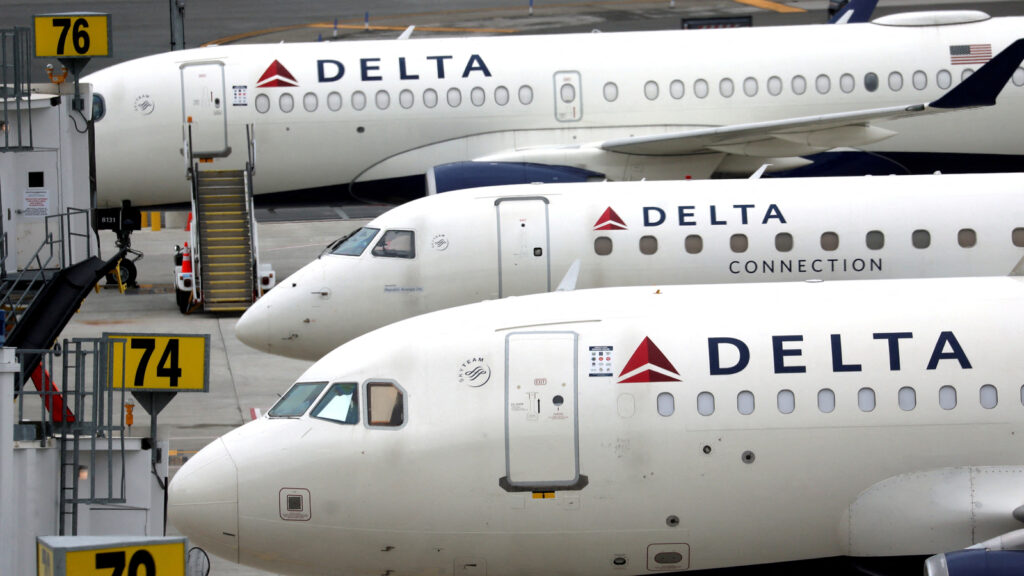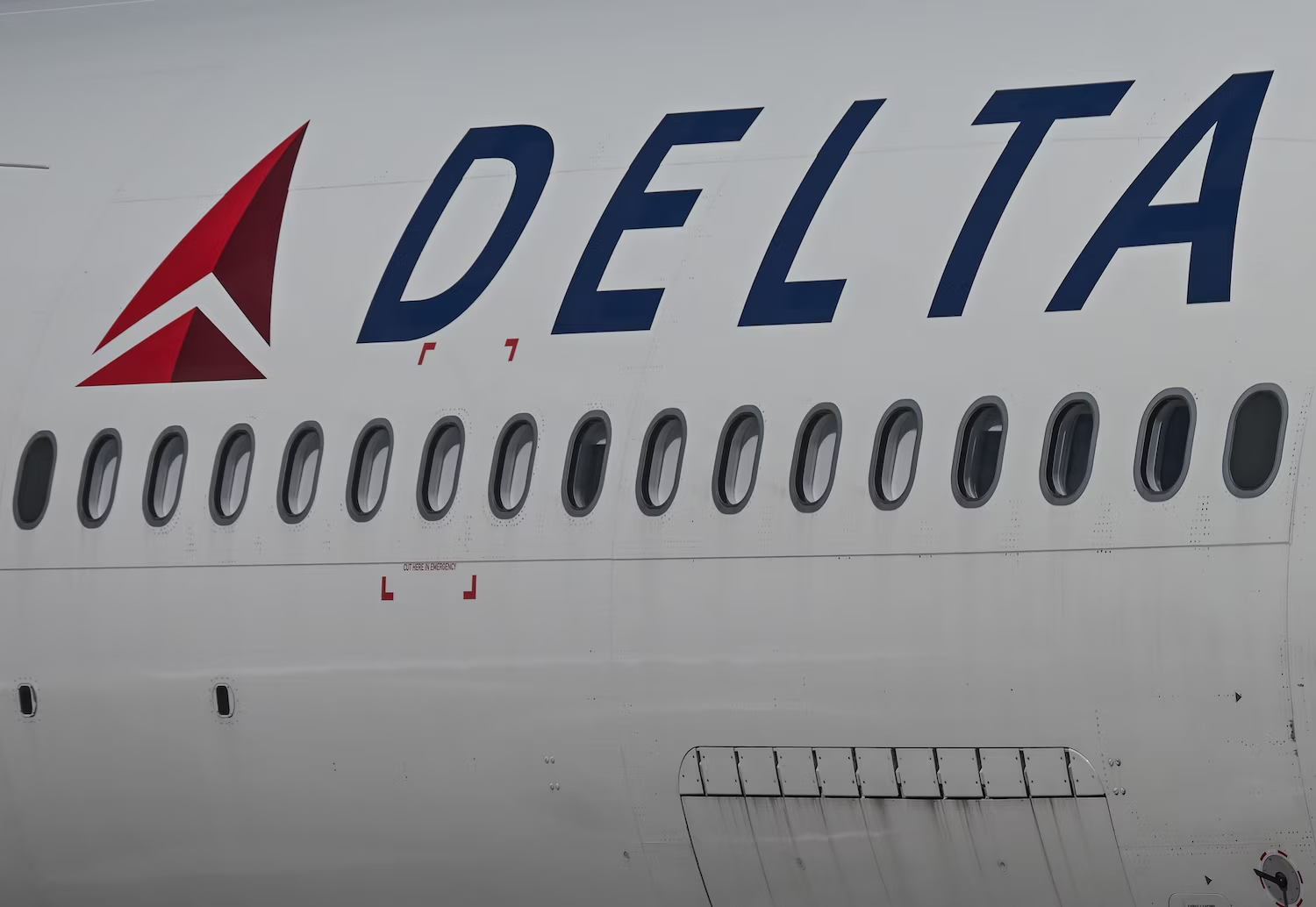Delta Plane’s Wing Clips Runway at LaGuardia Airport: Investigating the Incident and Its Implications
A Delta Air Lines flight experienced a concerning incident at LaGuardia Airport recently when its wing clipped the runway during takeoff. The event, while not resulting in any injuries, has triggered an investigation by the Federal Aviation Administration (FAA) and raised questions about safety protocols and potential contributing factors. This article delves into the details of the incident, examines the potential causes, and explores the broader implications for air travel safety.

The Incident: What We Know
On [Insert Date], Delta Air Lines flight [Insert Flight Number], an [Insert Aircraft Type] bound for [Insert Destination], was initiating its takeoff roll from Runway [Insert Runway Number] at LaGuardia Airport (LGA). According to preliminary reports and eyewitness accounts, as the aircraft accelerated down the runway, the tip of its wing made contact with the pavement.
Following the wing strike, the pilots immediately aborted the takeoff. The aircraft safely returned to the gate, where passengers were deplaned. Fortunately, no injuries were reported among the passengers or crew.
Delta Air Lines issued a statement acknowledging the incident and confirming their cooperation with the FAA investigation. They emphasized their commitment to safety, stating that a thorough review of the event is underway.
Potential Causes: Unraveling the Factors
While the FAA investigation is still in its early stages, several potential contributing factors could have played a role in the wing strike. These include:
- Wind Conditions: Strong crosswinds or gusts can significantly impact an aircraft’s trajectory during takeoff. A sudden gust could have pushed the wing closer to the ground, leading to the contact.
- Aircraft Loading and Weight Distribution: Improper loading or incorrect weight distribution can affect an aircraft’s balance and handling characteristics. An unevenly loaded aircraft might be more susceptible to tilting during takeoff.
- Pilot Error: While less likely, pilot error cannot be ruled out at this stage. Potential errors could include misjudging the aircraft’s position on the runway, incorrect application of controls, or a delayed response to changing conditions.
- Mechanical Issues: Although less probable, a mechanical malfunction, such as a faulty landing gear component or a control surface issue, could have contributed to the incident.
- Runway Conditions: Irregularities in the runway surface, such as uneven pavement or debris, could potentially cause an aircraft to deviate from its intended path.
The Investigation: What to Expect
The FAA will conduct a comprehensive investigation to determine the root cause of the wing strike. This investigation will likely involve:
- Review of Flight Data Recorder (FDR) and Cockpit Voice Recorder (CVR) Data: The FDR, often referred to as the “black box,” records crucial flight parameters, such as airspeed, altitude, and engine performance. The CVR captures conversations between the pilots and air traffic control. Analyzing this data will provide valuable insights into the events leading up to the incident.
- Aircraft Inspection: A thorough inspection of the aircraft will be conducted to identify any mechanical issues or structural damage.
- Pilot Interviews: The FAA will interview the pilots and crew members to gather their perspectives on the incident.
- Air Traffic Control Communication Review: Communication logs between the pilots and air traffic control will be examined to ensure proper procedures were followed.
- Weather Data Analysis: Meteorological data will be analyzed to determine the wind conditions at the time of the incident.
The investigation’s findings will be used to identify any necessary corrective actions and prevent similar incidents from occurring in the future.
LaGuardia Airport: A Challenging Environment
LaGuardia Airport, located in the borough of Queens in New York City, is known for its challenging operating environment. Several factors contribute to this:
- Limited Runway Length: LaGuardia’s runways are relatively short compared to other major airports, which can pose challenges for larger aircraft, particularly during takeoff and landing.
- Proximity to Water: The airport is surrounded by water, which can create unpredictable wind conditions and increase the risk of bird strikes.
- High Traffic Volume: LaGuardia is one of the busiest airports in the United States, which can lead to congestion and increased pressure on air traffic controllers.
These factors combine to make LaGuardia a demanding environment for pilots and air traffic controllers, requiring a high level of skill and vigilance.
Broader Implications for Air Travel Safety
While this incident did not result in any injuries, it serves as a reminder of the importance of maintaining the highest standards of safety in air travel. The investigation’s findings could lead to changes in:
- Pilot Training: Enhanced training programs may be implemented to address specific challenges associated with operating at airports like LaGuardia.
- Operational Procedures: Air traffic control procedures may be revised to improve safety margins during takeoff and landing.
- Aircraft Maintenance: More stringent maintenance protocols may be introduced to ensure that aircraft are operating at peak performance.
Frequency of Runway Incidents
While relatively rare considering the sheer volume of flights globally, runway incidents, including runway incursions and excursions, do occur. According to data culled from various aviation safety reporting systems, the following events are the most common:
| Incident Type | Description | Examples |
|---|---|---|
| Runway Incursion | An unauthorized presence on the runway, such as a vehicle, person, or another aircraft. | A ground vehicle crossing the runway without clearance; an aircraft taxiing onto the runway before cleared. |
| Runway Excursion | An aircraft veers off or overruns the runway during landing or takeoff. | An aircraft skidding off the runway due to weather; an aircraft landing long and running off the end. |
| Bird Strike | A collision between an aircraft and one or more birds. | A flock of birds impacting the windshield or engines; damage to the aircraft’s structure. |
| Hard Landing | A landing where the aircraft touches down with excessive force. | Damage to landing gear; passenger discomfort; potential structural damage. |
| Tailstrike | The tail of the aircraft strikes the runway during takeoff or landing. | Damage to the tail structure; potential for loss of control. |
| Gear-Up Landing | Landing an aircraft without the landing gear extended. | Substantial damage to the aircraft’s underside; potential fire hazard. |
These incidents, irrespective of their severity, serve as critical learning opportunities for the aviation community.
Conclusion
The wing strike incident at LaGuardia Airport is a serious event that requires a thorough investigation. While the exact cause remains to be determined, the investigation will undoubtedly shed light on the contributing factors and lead to recommendations for improving safety procedures. The aviation industry’s unwavering commitment to safety ensures that lessons learned from such incidents are incorporated into training, procedures, and maintenance practices, ultimately making air travel even safer for passengers and crew alike. The incident reinforces the need for constant vigilance, rigorous safety protocols, and continuous improvement in the aviation industry.



